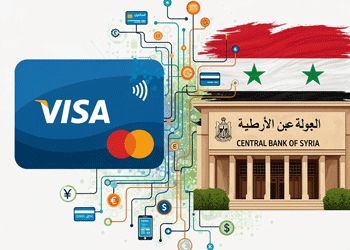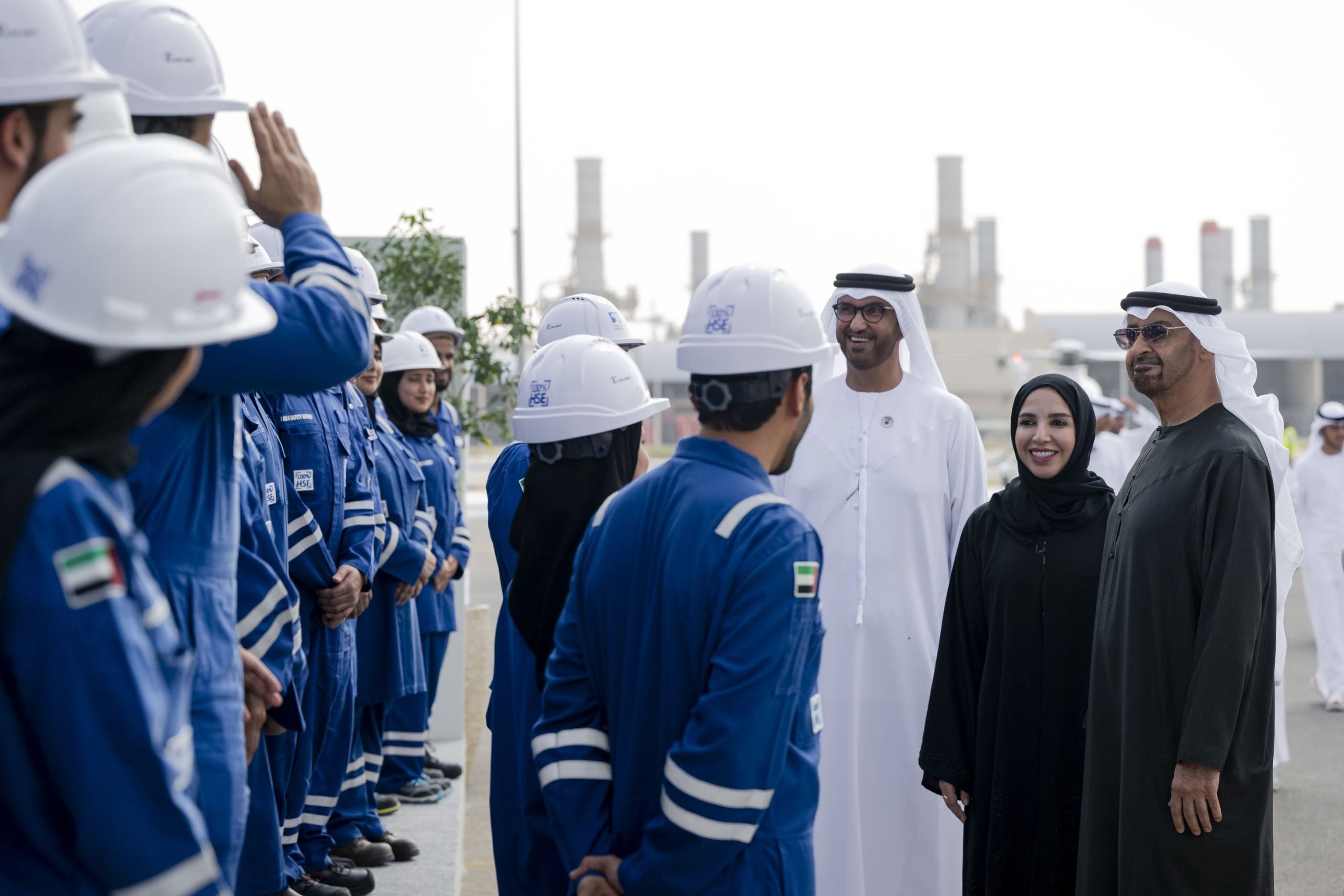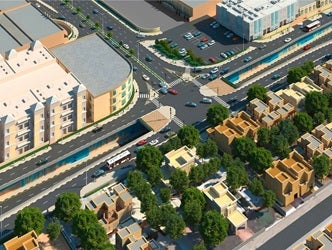Region remains global project finance hotspot
25 October 2024

This package also includes: PPP activity eases back but remains strong
While the Middle East and North Africa (Mena) region has recently become the focus of global attentions for all the wrong reasons – amid surging conflict in the Levant – advisers continue to see the adjacent Gulf as a standout market for project finance.
“The Middle East market has been buoyant compared to the project finance market in many other parts of the world,” says Matthew Escritt, a partner at the UAE office of law firm Pinsent Masons, who has advised on large regional financings.
“By far and away, the Middle East is the place to be if you want to do big-ticket project finance.”
Major deals such as the $6.1bn financing for Neom Green Hydrogen Company, which closed in 2023, affirm the region’s continued affinity with large and sometimes complex transactions that involve senior and mezzanine facilities and bring numerous financial institutions into the mix.
The use of project finance structures across a widening array of sectors – from hard and soft infrastructure, to newer asset classes such as green energy – suggests that the Middle East will remain a hotspot for funding activity.
Ratings agency S&P Global has forecast that alongside the energy sector, the region will see significant investments in transport and social infrastructure, as well as in digitalisation, with large outlays on connectivity and a doubling of data centre capacity as the region’s population continues to grow.
Regional reconfiguration
While the Mena region as a whole has seen an uptick in activity, the picture is not even.
“Activity in Saudi Arabia has seen something of a slowdown after it became clear that some of the kingdom’s more ambitious plans were being recalibrated,” says Escritt.
“Liquidity has become tighter and we’re finding that procurers are taking longer to announce their preferred bidder.”
Appetite among international banks has been weaker for some sectors, such as social infrastructure.
Neom’s large green hydrogen financing of 2023 remains a standout rather than the norm, although local lenders appear ready to step into the breach when circumstances allow. For example, in April of this year, when Neom secured a $2.7bn revolving credit facility to cover short-term financing requirements, it was nine local banks that ended up providing the financing. It was, according to Neom CEO Nadhim Al-Nasr, a “natural fit” within the company’s wider funding structure.
International banks’ interest remains fixed on energy sector and infrastructure projects. Outside of these, says Escritt, the project finance market is dominated by large local banks. This, he says, has contributed to a tighter liquidity environment as these financial institutions run up against exposure limits. “The key to unlocking that market’s undoubted potential is to create conditions that improve the appetite of foreign lenders for Saudi Arabian credits,” says Escritt.
International lenders’ comfort zones were once largely focused on massive financings such as the kingdom’s Sadara petrochemicals project, which in 2013 drew commitments of $12.5bn.
“Frankly, the days of the Sadara blockbuster-type projects are over. But there’s still some substantial projects out there,” says John Dewar, a partner at international law firm Milbank, which specialises in energy and infrastructure financings.
Dewar points out that there are still a fair number of $2bn-$4bn projects in the region, but that it is more challenging to syndicate larger scales of debt. Even export credit agency (ECA) support is not a given in the Mena region.
“Even if they’ve got large export content in them, it’s still more difficult to get them mobilised into oil and gas financings, for example. The ECAs are pulling back from those types of deals,” says Dewar. “Petrochemicals is slightly easier, but nonetheless, over the next couple of years we will see fewer agency lenders involved in the petrochemicals sector than we have at the moment.”
The UAE – Abu Dhabi in particular – remains a bright spot in the region.
“Abu Dhabi has shown that it is very good at getting things done,” says Escritt, whose team helped bring the Khalifa University student accommodation public-private partnership project to financial close – another significant social infrastructure project in the UAE capital.
“There’s a strong appetite among the major project finance players for Abu Dhabi risk – they like it.
“You are also now seeing the larger local banks stepping into this space, with Abu Dhabi Commercial Bank and First Abu Dhabi Bank in particular showing appetite for these credits,” says Escritt.
The Qatari market has proved more sluggish, although the Al-Wakra and Wukair independent sewage treatment plant project – the country’s first – has seen progress this year with a $540m financing on a 75:25 debt-to-equity ratio basis, including a soft mini-perm structure.
Emergent energy markets
Energy has traditionally been a magnet for project financing in the Mena region and should support one of the emerging areas within that segment – carbon capture and storage (CCS), which is an area of focus for regional oil companies.
Saudi Aramco’s first phase of its Accelerated Carbon Capture and Sequestration project is expected to be the world’s largest CCS hub upon completion. Aramco aims to transport and capture 9 million tonnes a year of emissions by 2027 in its first phase.
Carbon-capture financing could prove an attractive opportunity for banks, swelling the liquidity that is already there for hydrogen schemes.
Lender appetite has increased for these new energy schemes. “[Saudi Arabia] had a large splash on solar power recently with Acwa Power financings, while Saudi Aramco will have relatively large financing requirements for its energy transition projects. The [kingdom is] now still very much focused on project finance transactions,” says Dewar.
With Oman pushing green hydrogen projects in Duqm and Dhofar, and Egypt backing an ambitious renewables programme under a structure that investors have found to be attractive and bankable, project financing should make more headway in the low-carbon space across the region.
In renewables, there is more depth in the market and more lenders willing to participate, although as law firm AO Shearman has noted, there remains a deficiency in bankability and unpredictable development costs in green hydrogen schemes.
This piqued interest in non-fossil fuel project funding contrasts with the reduced appetite globally among banks for traditional hydrocarbons schemes. “If you’re looking at oil and gas financing, then it’s increasingly a struggle outside of some of the Chinese banks,” says Dewar. “That’s not to say that in the Middle East there aren’t still a number of local and regional banks that are happy to participate in the market.”
Government support will remain critical in getting centrepiece financings under way in areas such as green hydrogen. And, as AO Shearman notes, given the nature of the supply chain for green hydrogen projects, there is value in including ECA-supported debt in the financing mix. In particular, where Mena projects involve key equipment coming in from outside the region, ECAs have an important role to play in building confidence.
ECAs remain a mainstay in traditional Gulf downstream sectors such as petrochemicals. For example, South Korea’s Hyundai Engineering & Construction has tapped $1bn of project financing support from the Export-Import Bank of Korea for the Amiral petrochemicals project in Saudi Arabia. As the lone South Korean contractor deployed on the estimated $7bn scheme, it therefore enjoys sole access to this project financing facility.
Project sponsors will also be looking to capital market instruments, despite these losing favour in recent years as the global
interest-rate environment rendered proposed bond components in project financings less appealing to many.
With the US Federal Reserve in a gradual monetary easing cycle, however, the use of project-related bonds may begin to revive.
For example, Saudi Aramco has managed to complete some large gas pipeline financings using acquisition facilities that were refinanced in the bond and sukuk markets.
“As the interest-rate environment changes, that’s going to get more people thinking about bond refinancing activity. We’ll see a bit more in a year’s time, when interest rates have come down and investors readjust and start to look for more attractive yields,” says Dewar.
With a different interest-rate climate in place, and more lenders and project backers gaining experience in the new energy schemes that are emerging in the Gulf and the wider Mena region, the hope is that banks will be dipping back into the region with transactions that will maintain its status as the global project finance hotspot for a while longer.
Exclusive from Meed
-
 Visa agrees to support digital payments in Syria
Visa agrees to support digital payments in Syria5 December 2025
-
 Meraas announces next phase of Nad Al-Sheba Gardens
Meraas announces next phase of Nad Al-Sheba Gardens5 December 2025
-
 Frontrunner emerges for Riyadh-Qassim IWTP
Frontrunner emerges for Riyadh-Qassim IWTP5 December 2025
-
 Adnoc creates new company to operate Ghasha concession
Adnoc creates new company to operate Ghasha concession5 December 2025
-
 Dubai RTA announces Al-Wasl road development project
Dubai RTA announces Al-Wasl road development project5 December 2025
All of this is only 1% of what MEED.com has to offer
Subscribe now and unlock all the 153,671 articles on MEED.com
- All the latest news, data, and market intelligence across MENA at your fingerprints
- First-hand updates and inside information on projects, clients and competitors that matter to you
- 20 years' archive of information, data, and news for you to access at your convenience
- Strategize to succeed and minimise risks with timely analysis of current and future market trends

Related Articles
-
 Visa agrees to support digital payments in Syria
Visa agrees to support digital payments in Syria5 December 2025
Visa and the Central Bank of Syria have agreed on a strategic roadmap that will allow the US-based card and digital payments company to begin operations in Syria and support the development of a modern digital payments system.
Under the agreement, Visa will work with licensed Syrian financial institutions under a phased plan to establish a secure foundation for digital payments.
The early stages will involve Visa supporting the central bank in issuing Europay, Mastercard and Visa (EMV)-compliant payment cards and enabling tokenised digital wallets – bringing the country in line with internationally interoperable standards.
Visa will also provide access to its platforms, including near-field communication (NFC) and QR-based payments, invest in local capacity building and support local entrepreneurs seeking to develop solutions leveraging Visa’s global platform.
“A reliable and transparent payment system is the bedrock of economic recovery and a catalyst that builds the confidence required for broader investment to flow into the country,” noted Visa’s senior VP for the Levant, Leila Serhan. “This partnership is about choosing a path where Syria can leapfrog decades of legacy infrastructure development and immediately adopt the secure, open platforms that power modern commerce.”
The move marks one of the most significant steps yet in Syria’s slow and uneven return to the formal global financial system and carries implications that reach beyond just payments technology.
It lays the groundwork for overturning more than a decade of financial isolation in which Syria has operated largely outside global banking and settlement networks.
Visa’s entry will not erase all existing barriers – as many restrictions remain in force and will continue to shape what is practically possible – but its support signals a reopening of channels that could smooth Syria’s reintegration into financial networks.
The involvement of the US-based payments provider is also a further tacit sign of the US government’s enthusiastic bear hug of the new post-Assad Syrian government under President Ahmed Al-Sharaa.
For investors assessing long-term opportunities, the presence of a globally recognised payments operator will provide reassurance that Syria’s financial system is returning to international norms, and the security and transparency that comes with it.
https://image.digitalinsightresearch.in/uploads/NewsArticle/15207198/main.gif -
 Meraas announces next phase of Nad Al-Sheba Gardens
Meraas announces next phase of Nad Al-Sheba Gardens5 December 2025
Dubai-based real estate developer Meraas Holding, which is part of Dubai Holding, has announced the eleventh and final phase of its Nad Al-Sheba Gardens residential community in Dubai.
It includes the development of 210 new villas and townhouses and a school, which will be located at the northwest corner of the development.
The latest announcement follows Meraas awarding a AED690m ($188m) contract for the construction of the fourth phase of the Nad Al-Sheba Gardens community in May, as MEED reported.
The contract was awarded to local firm Bhatia General Contracting.
The scope of the contract covers the construction of 92 townhouses, 96 villas and two pool houses.
The contract award came after Dubai-based investment company Shamal Holding awarded an estimated AED80m ($21m) contract to UK-based McLaren Construction last year for the Nad Al-Sheba Gardens mall.
The project covers the construction and interior fit-out of a two-storey mall, covering an area of approximately 12,600 square metres.
The UAE’s heightened real estate activity is in line with UK analytics firm GlobalData’s forecast that the construction industry in the country will register annual growth of 3.9% in 2025-27, supported by investments in infrastructure, renewable energy, oil and gas, housing, industrial and tourism projects.
The residential construction sector is expected to record an annual average growth rate of 2.7% in 2025-28, supported by private investments in the residential housing sector, along with government initiatives to meet rising housing demand.
https://image.digitalinsightresearch.in/uploads/NewsArticle/15206904/main.jpg -
 Frontrunner emerges for Riyadh-Qassim IWTP
Frontrunner emerges for Riyadh-Qassim IWTP5 December 2025

Saudi Arabia’s Vision Invest has emerged as frontrunner for the contract to develop the Riyadh-Qassim independent water transmission pipeline (IWTP) project, according to sources.
State water offtaker Saudi Water Partnership Company (SWPC) is preparing to award the contract for the IWTP "in the coming weeks", the sources told MEED.
The project, valued at about $2bn, will have a transmission capacity of 685,000 cubic metres a day. It will include a pipeline length of 859 kilometres (km) and a total storage capacity of 1.59 million cubic metres.
In September, MEED reported that bids had been submitted by two consortiums and one individual company.
The first consortium comprises Saudi firms Al-Jomaih Energy & Water, Al-Khorayef Water & Power Technologies, AlBawani Capital and Buhur for Investment Company.
The second consortium comprises Bahrain/Saudi Arabia-based Lamar Holding, the UAE's Etihad Water & Electricity (Ewec) and China’s Shaanxi Construction Installation Group.
The third bid was submitted by Saudi Arabia's Vision Invest.
It is understood that financial and technical bids have now been opened and Vision Invest is likely to be awarded the deal.
The Riyadh-based investment and development company made a "very aggressive" offer, one source told MEED.
In November, the firm announced it had sold a 10% stake in Saudi Arabia-based Miahona as part of a strategy to reallocate capital "towards new and diversified investments".
The company did not disclose which projects the capital might be reallocated towards.
As MEED recently reported, Vision Invest is also bidding for two major packages under Dubai's $22bn tunnels programme in a consortium with France's Suez Water Company.
The Riyadh-Qassim transmission project is the third IWTP contract to be tendered by SWPC since 2022.
The first two are the 150km Rayis-Rabigh IWTP, which is under construction, and the 603km Jubail-Buraydah IWTP, the contract for which was awarded to a team of Riyadh-based companies comprising Al-Jomaih Energy & Water, Nesma Group and Buhur for Investment Company.
Like the first two IWTPs, the Riyadh-Qassim IWTP project will be developed using a 35-year build-own-operate-transfer contracting model.
Commercial operations are expected to commence in the first quarter of 2030.
https://image.digitalinsightresearch.in/uploads/NewsArticle/15206609/main.jpg -
 Adnoc creates new company to operate Ghasha concession
Adnoc creates new company to operate Ghasha concession5 December 2025
Register for MEED’s 14-day trial access
The board of directors of Abu Dhabi National Oil Company (Adnoc Group) has approved the establishment of a new company to operate the Ghasha offshore sour gas concession in Abu Dhabi waters.
The decision to create the new entity, to be called Adnoc Ghasha, was taken during a recent meeting of Adnoc Group’s board in Abu Dhabi, which was chaired by Sheikh Mohamed Bin Zayed Al-Nahyan, UAE President and Ruler of Abu Dhabi.
Adnoc Group owns and operates the Ghasha concession, holding the majority 55% stake. The other stakeholders in the asset are Italian energy major Eni with a 25% stake, Thailand’s PTTEP Holding, which holds a 10% interest, and Russia’s Lukoil, owning the remaining 10% stake.
The Ghasha concession consists of the Hail and Ghasha fields, along with the Hair Dalma, Satah al-Razboot (Sarb), Bu Haseer, Nasr, Shuwaihat and Mubarraz fields.
Adnoc expects total gas production from the concession to ramp up to more than 1.8 billion cubic feet a day (cf/d) before the end of the decade, along with 150,000 barrels a day of oil and condensates. This target will mainly be achieved through the Hail and Ghasha sour gas development project.
In October 2023, Adnoc and its partners awarded $16.94bn of engineering, procurement and construction (EPC) contracts for its Hail and Ghasha project – the biggest capital expenditure made by the Abu Dhabi energy company on a single project in its history.
Adnoc awarded the onshore EPC package to Italian contractor Tecnimont, while the offshore EPC package was awarded to a consortium of Abu Dhabi’s NMDC Energy and Italian contractor Saipem.
The $8.2bn contract relates to EPC work on offshore facilities, including facilities on artificial islands and subsea pipelines.
The Hail and Ghasha development will also feature a plant that will capture and purify carbon dioxide (CO2) emissions for sequestration (CCS), in line with Adnoc’s committed investment for a carbon capture capacity of almost 4 million tonnes a year (t/y). The CO2 recovery plant will have a total capacity to capture and store 1.5 million t/y of emissions from the Hail and Ghasha scheme.
Prior to reaching the final investment decision on the Hail and Ghasha project in 2023, the Ghasha concession partners, led by Adnoc, awarded two EPC contracts worth $1.46bn in November 2021 to execute offshore and onshore EPC works on the Dalma gas development project. The project will enable the Dalma field to produce about 340 million cf/d of natural gas.
https://image.digitalinsightresearch.in/uploads/NewsArticle/15206382/main2754.jpg -
 Dubai RTA announces Al-Wasl road development project
Dubai RTA announces Al-Wasl road development project5 December 2025
Register for MEED’s 14-day trial access
Dubai’s Roads & Transport Authority (RTA) has announced the Al-Wasl Road upgrade project, spanning 15 kilometres (km) from the intersection with Umm Suqeim Street to the junction with 2nd December Street.
The scheme includes upgrading six intersections – Al-Thanya, Al-Manara, Umm Al-Sheif, Umm Amara, Al-Orouba and Al-Safa streets – along with upgrading Al-Thanya Street and constructing five tunnels totalling 3.8km.
A new tunnel will be built at the intersection with Al-Manara Street. It will consist of three lanes and split into two routes: two lanes from Sheikh Zayed Road to Jumeirah Street and two lanes from Sheikh Zayed Road to Umm Suqeim Street, with a total capacity of 4,500 vehicles per hour.
The project also includes a 750m-long tunnel on Umm Al-Sheif Street, comprising two lanes from Sheikh Zayed Road to Jumeirah Street, accommodating up to 3,200 vehicles per hour.
A tunnel will be constructed at the intersection of Al-Wasl Road with Umm Amara Street, featuring two lanes in each direction, with a total length of 700m and a combined capacity of 6,400 vehicles per hour.
The road will also be widened from two to three lanes in each direction.
The project is expected to reduce travel times along Al-Wasl Road by 50% and increase capacity from 8,000 to 12,000 vehicles per hour in both directions.
Planning for growth
In March 2021, the government launched the Dubai 2040 Urban Master Plan. Its launch referenced studies indicating that the emirate’s population will reach 5.8 million by 2040, up from 3.3 million in 2020. The daytime population is set to increase from 4.5 million in 2020 to 7.8 million in 2040.
In December 2022, Sheikh Mohammed Bin Rashid Al-Maktoum, Vice President and Prime Minister of the UAE and Ruler of Dubai, approved the 20-Minute City Policy as part of the second phase of the Dubai 2040 Urban Master Plan.
In addition to the road projects, the RTA’s Dubai Metro Blue Line extension forms part of Dubai’s plans to improve residents’ quality of life by cutting journey times, as outlined in the policy.
The policy aims to ensure that residents can meet 80% of their daily requirements within a 20-minute journey time, on foot or by bicycle. This goal will be achieved by developing integrated service centres with all necessary facilities and by increasing population density around mass transit stations.
https://image.digitalinsightresearch.in/uploads/NewsArticle/15205950/main.jpg



